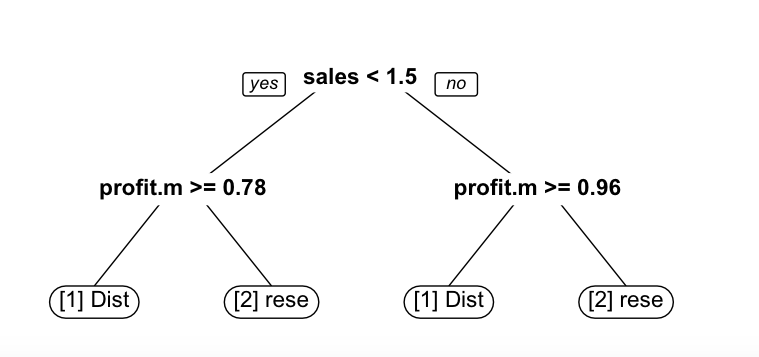I have data which looks like
data.frame': 29969 obs. of 12 variables:
$ X : int 1 2 3 4 5 6 7 8 9 10 ...
$ Productcode : int 102146 102146 102146 102146 102146 102146 102146 102146 102146 102146 ...
$ Category : Factor w/ 19 levels "[02] Livestocks",..: 1 1 1 1 1 1 1 1 1 1 ...
$ Month : int 1 3 4 6 7 8 9 10 11 12 ...
$ Mode.of.operations: Factor w/ 2 levels "[1] Distribution",..: 1 1 1 1 1 1 1 1 1 1 ...
$ sales : int 0 0 0 0 0 0 0 0 0 0 ...
$ profit.margin : num 0 0 0 0 0 0 0 0 0 0 ...
$ Name : Factor w/ 1247 levels "★南方芝麻糊",..: 757 757 757 757 757 757 757 757 757 757 ...
$ Packaging.content : int 32 32 32 32 32 32 32 32 32 32 ...
$ Specifications : Factor w/ 331 levels "0","1.018kg",..: 254 254 254 254 254 254 254 254 254 254 ...
$ Unit : Factor w/ 27 levels "个","代","件",..: 23 23 23 23 23 23 23 23 23 23 ...
$ Origin : Factor w/ 131 levels "0","409","上海",..: 82 82 82 82 82 82 82 82 82 82 ...
X Productcode Category Month Mode.of.operations sales profit.margin Name Packaging Specs Unit Origin
1 1 102146 [02] Livestocks 1 [1] Distribution 0 0 洪湖松花皮蛋 32 6枚 盒 洪湖
2 2 102146 [02] Livestocks 3 [1] Distribution 0 0 洪湖松花皮蛋 32 6枚 盒 洪湖
3 3 102146 [02] Livestocks 4 [1] Distribution 0 0 洪湖松花皮蛋 32 6枚 盒 洪湖
4 4 102146 [02] Livestocks 6 [1] Distribution 0 0 洪湖松花皮蛋 32 6枚 盒 洪湖
5 5 102146 [02] Livestocks 7 [1] Distribution 0 0 洪湖松花皮蛋 32 6枚 盒 洪湖
6 6 102146 [02] Livestocks 8 [1] Distribution 0 0 洪湖松花皮蛋 32 6枚 盒 洪湖
I am trying to use classification and regression trees in R to help me understand the data. I want to visualise that which categories under what sales number or profit margin adopted which mode of operation. So I want to relate Mode of operations variable to other variables like category, sales, profit margin, origin, packaging and specs.
Based on my limited knowledge of R and Trees I tired to do it by running following command
>wushang.model = rpart(Mode.of.operations ~ sales+Packaging.content+profit.margin+Category+Origin, data=wushangtest, method ="Class", control =rpart.control(minibucket=25))
>prp(wushang.model)
What I am doing wrong? Even if there is a little relation among variables I want R to classify and show it.

